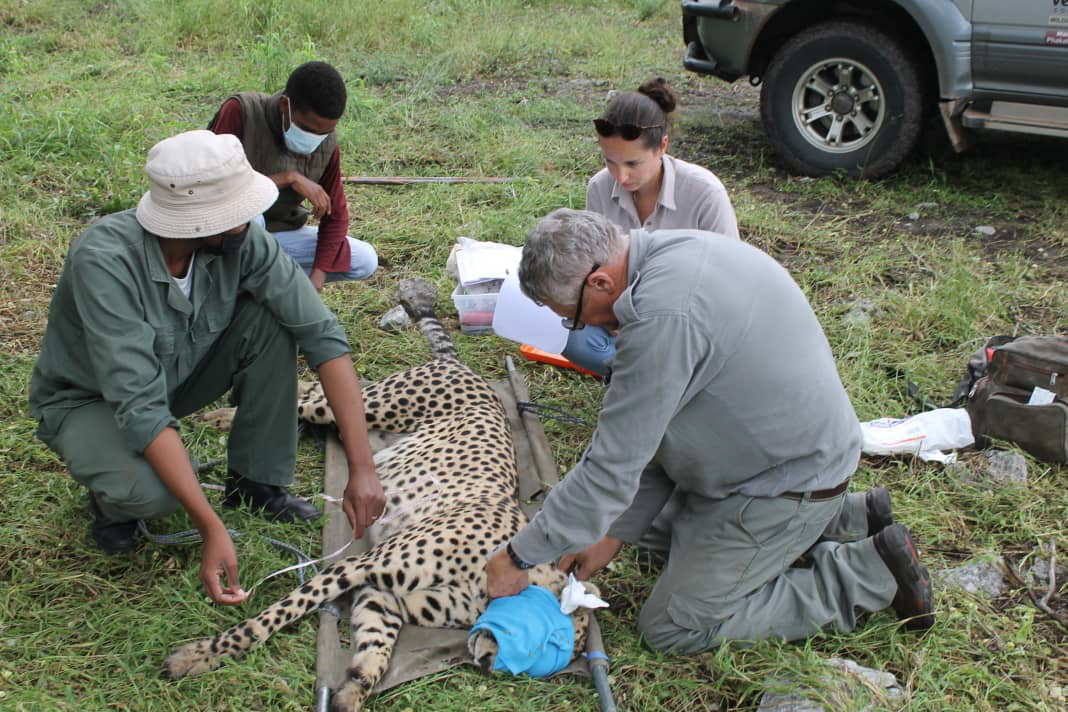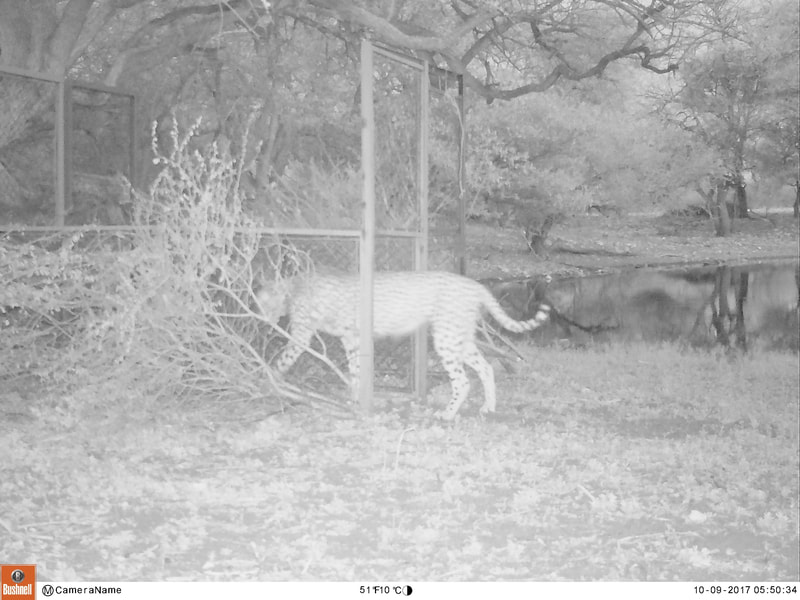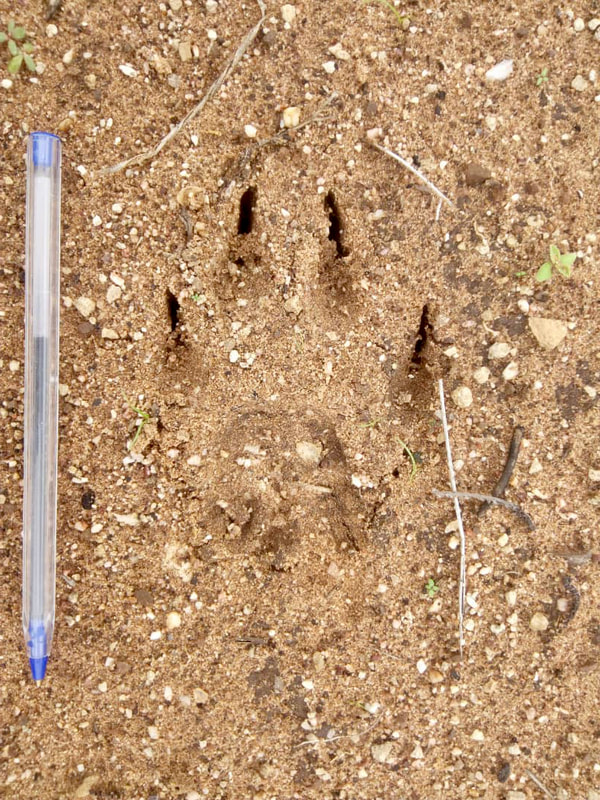Cheetahs survive in this farming area so effectively for a reason. Whether it’s the thick bush hiding them from prying eyes, their secretive nature adapted after years of persecution or a combination of both – these cats survive because they avoid humans. And we are both proud of this and lament it at the same time (because who doesn’t want to see cheetahs all the time?).
As a result, when it comes to catching cheetahs to place research collars on them, everyone on our team gets a little excited. Because it is one of those rare times that you not only get to see a cheetah, but you get up close enough to feel their fur, see their heartbeat and marvel at their amazing physicality. That is, if you’re lucky enough to catch one. Our research team has been undergoing cheetah trapping on and off for the last year in a bid to fit 7 Vectronics Lite tracking collars on cheetahs near the Namibian border to assess transboundary movements, home range utilization and analyse the connectivity between Namibia and Botswana - the two countries that are home to half of the world’s cheetahs. Despite 48 trapping days we have only successfully caught three cheetahs, one of which died of natural causes only three weeks after he was collared. This may not sound like a lot of trapping effort, but you have to consider that these traps are being set in extremely isolated areas and each trap needs to be monitored in person every day early in the morning so that any cheetah caught is not left in the cage for long. This whole process takes up almost every waking hour of our entire research team during trapping events. Because there is no available veterinarian located in the nearby town of Ghanzi, this further limits the times that we are able to collar cheetahs.
When we do catch and collar a cheetah it is reason to celebrate. And we are happy to report that on 12th April our team caught a beautiful male cheetah at Dqae Qare Game Farm just north of Ghanzi town. He was a big boy – weighing in at 60kg and the estimated 4-year-old cat was reported to be in excellent health. With the help of our veterinarian Erik Verreynne, we fitted a GPS satellite collar which will record his location every two hours for over nine months. We were excited to see that he travelled an impressive 15 kilometers (9 miles) in the 10 hours following his release. From the two collars currently in the field, we have seen that they can move great distances in one day but will settle in areas where there is plentiful wild prey species, such as well-stocked game farms. We are hoping that this male will venture over the Namibian border and give us more insight into how cheetahs are negotiating the international border and the protected and non-protected lands that surround it.
We are thankful to Erik for his vet expertise and to our supporters for making this research possible.




 RSS Feed
RSS Feed
